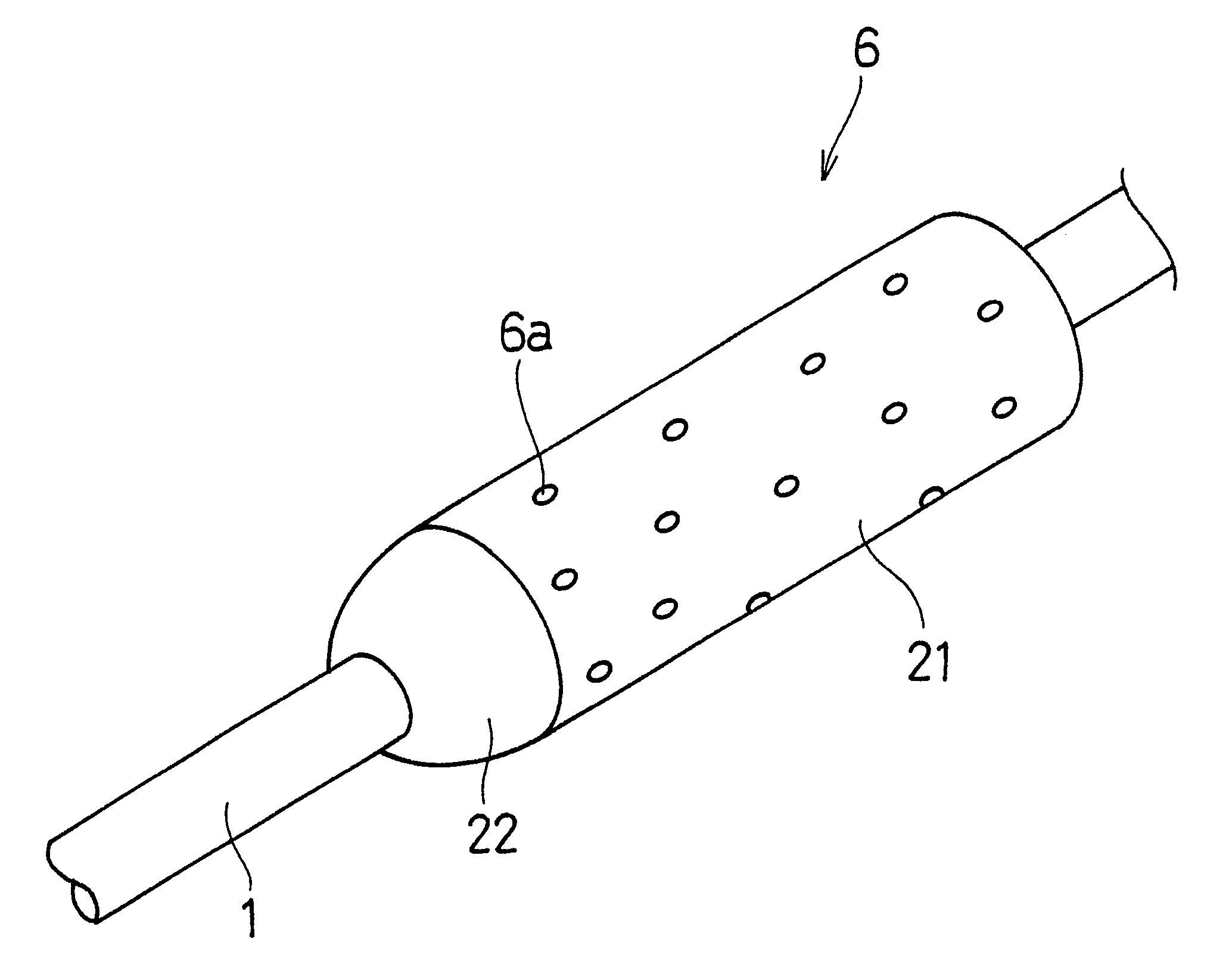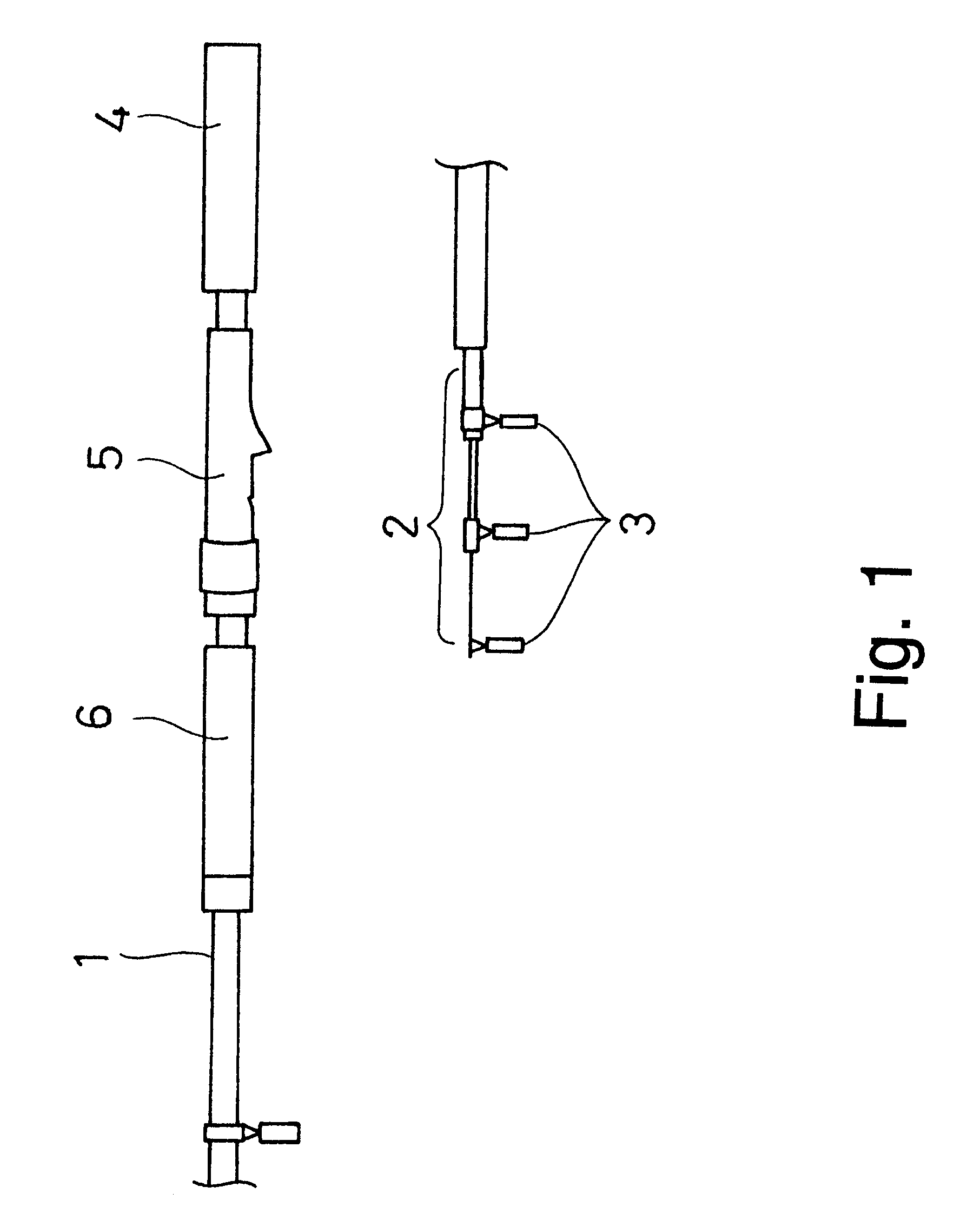Grip and method of manufacturing the same
a technology of grip and filling agent, which is applied in the field of cork grip, can solve the problems of not always smooth and smooth grip, unsatisfactory appearance and feel of the grip,
- Summary
- Abstract
- Description
- Claims
- Application Information
AI Technical Summary
Benefits of technology
Problems solved by technology
Method used
Image
Examples
Embodiment Construction
(a) A grip according to the present invention is not limited to a grip of a fishing rod, but rather may be applied to a golf club, a tennis racket, a walking stick, or other such implements which require a grip.
(b) Other than cork powder, various types of materials may be mixed to the filling agent.
As described in the foregoing, the present invention provides a cork grip which does not break easily and has an excellent, appealing appearance.
Various details of the invention may be changed without departing from its spirit nor its scope. Furthermore, the foregoing description of the embodiments according to the present invention is provided for the purpose of illustration only, and not for the purpose of limiting the invention as defined by the appended claims and their equivalents.
PUM
 Login to View More
Login to View More Abstract
Description
Claims
Application Information
 Login to View More
Login to View More - R&D
- Intellectual Property
- Life Sciences
- Materials
- Tech Scout
- Unparalleled Data Quality
- Higher Quality Content
- 60% Fewer Hallucinations
Browse by: Latest US Patents, China's latest patents, Technical Efficacy Thesaurus, Application Domain, Technology Topic, Popular Technical Reports.
© 2025 PatSnap. All rights reserved.Legal|Privacy policy|Modern Slavery Act Transparency Statement|Sitemap|About US| Contact US: help@patsnap.com



